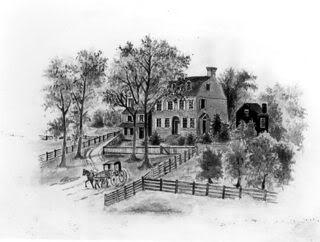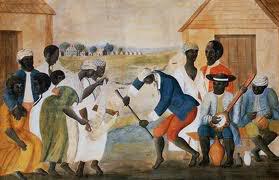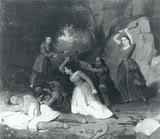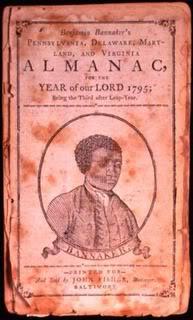Civil War Nurse and Educator Eliza Emily Chappell Porter was the first public school teacher at Fort Dearborn in Chicago. She established normal schools to train high school graduates to be teachers. As a member of the U.S. Sanitary Commission during the Civil War, she established hospitals for wounded soldiers and distributed supplies. The Porter home in Green Bay, Wisconsin was the last stop on the Underground Railroad before slaves crossed Lake Michigan into the safety of Canada. Early Years Eliza Emily Chappell was born November 5, 1807 in Geneseo, New York, the eighth child of Robert and Elizabeth Kneeland Chappell. Elizabeth died from complications of childbirth. Already burdened with seven young children at home, Robert sent Eliza to live…

Elizabeth Haddon
Namesake of Haddonfield New Jersey Haddonfield Plantation Elizabeth Haddon was born May 25, 1680, in Southwark, London, England. By the age of six, Elizabeth had probably begun her education. She was also actively interested in her mother’s charities, and as she grew older, she went on modest little charitable ventures of her own. On one occasion, so the story goes, she asked her mother to let her have a party, and when the guests arrived, they were six tattered youthful beggars of the most forlorn London type. In 1698, Elizabeth’s Quaker father, John Haddon – a friend of William Penn – bought a 500-acre tract of land in Gloucester County in the English colony of West Jersey to escape religious…

Blandina Kiersted Bayard
Blandina Kiersted was born in 1653, and was the daughter of Sarah Kiersted, a translator for the Lenape sachem (leader), Chief Oratam, in what is now New Jersey. Blandina learned the Lenape language from her mother, and also acted as an interpreter. Image: Building a Lenape Longhouse Lenape Life The Lenape made dome-shaped houses called wigwams where a small family or individual could live. They pushed a circle of poles into the ground and then bent them over one another to make a domed frame, which they covered with sheets of bark, skins or woven rush mats. Several families sometimes lived together in a larger longhouse, still rounded on top, but longer. Inside the longhouse were platforms of poles on…

Slavery in South Carolina
History of Slavery in South Carolina Image: Plantation Dance in South Carolina This well-known watercolor by an unidentified artist depicts people presumed to be plantation slaves dancing and playing musical instruments. It gives a rare view of African American life in South Carolina during the colonial period. The women are wearing head wraps and gowns with fitted bodices and long full skirts. Some of the men are wearing earrings. Although its setting is uncertain, materials in the files of Colonial Williamsburg suggest a plantation between Charleston and Orangeburg, South Carolina. Conditions in the South were favorable for slavery. Large stretches of fertile land, a warm climate that the Negroes tolerated much better than the whites, and unhealthy regions where white…
Rose O’Neal Greenhow
Confederate Civil War Spy Early Years Born in Port Tobacco, Maryland, as a teenager Rose O’Neal moved from her family’s Maryland farm to her aunt’s fashionable boardinghouse in Washington, DC. Personable, intelligent, and outgoing, she adapted easily to the social scene of the capital, and people in Washington’s highest circles opened their doors to her. At the age of 26, Rose disappointed an army of suitors by marrying 43-year-old Dr. Robert Greenhow, a wealthy and learned man with whom she had four daughters. In 1850, the couple left Washington and traveled west to pursue the promise of great financial gain. Instead, an injury led to the early death of Dr. Greenhow in San Francisco. A popular Washington widow and hostess…

Slavery in North Carolina
History of Slavery in North Carolina Image: Illustration shows white children playing with a black child, and “represents the old Negro servants of the planter’s family among his children. The children of the [white] family grow up among the Negro domestic servants, and often learn to regard them with as much affection as they show their own parents.” Source: The Illustrated London News Many of the first slaves in North Carolina were brought to the colony from the West Indies or other surrounding colonies, but a significant number were brought from Africa. Most of the English colonists arrived as indentrued servants, hiring themselves out as laborers for a fixed period to pay for their passage. In the early years the…

Hannah Dustin
Indian Captive Image: Painting by Junius Brutus Stearns, 1847 Earliest known painting of the Hannah Dustin Story Hannah Dustin/Duston was a forty-year-old colonial New England woman who was captured during an Indian raid, and escaped from her captors by killing them in the night and fleeing in their canoe. She is believed to be the first woman honored in the United States with a statue. Born Hannah Emerson on December 23, 1657, Hannah Dustin, her husband Thomas, and their nine children were living in Haverhill, Massachusetts, when the town was attacked by Abenaki Indians on March 15, 1697. Thomas fled with eight of the children, but Hannah, her six-day-old baby Martha, and her nurse Mary Neff were captured.

Molly Welsh Banneker
English Women and African Slaves Banneker’s 1795 Almanac In 1690, after working for seven years on a tobacco plantation in Maryland, Molly earned her freedom, and bought a 120-acre farm ten miles from Baltimore. In 1692, she bought two slaves from a ship in the Chesapeake Bay. One of the slaves was a man named Banneka, the son of an African chieftain. Banneka’s intelligence and dignity deeply impressed Mary Welsh. In England, during the 17th century, people who were convicted of crimes were sometimes shipped to the American colonies to work on plantations. In 1683, Molly Welsh, an English dairy maid, was found guilty of stealing milk from a farmer. In fact, she had accidentally knocked over a pail of…
Eliza Rhea Anderson Fain
Civil War Civilian and Diarist In her diary, Eliza Fain tells the history of the Civil War as it happened at Rogersville in northeastern Tennessee, an area that was sharply divided in its loyalties to the Union and the Confederacy. She tells of soldiers stopping by their home, deaths and the Battle at Big Creek. The originals of the twenty-eight volumes that comprise Fain’s diary – almost 1,000,000 words – were discovered eighty years after her death. Eliza Rhea Anderson was born at Blountville, Tennessee, on August 1, 1816, to Elizabeth Rhea and Audley Anderson. Eliza’s father died when she was two, leaving her mother with little alternative but to seek refuge for herself and her family with her brother….

Mary Rowlandson
The Year: 1676 Born around 1637 in Somerset, England, Mary White was the sixth of ten children. Her family immigrated to New England when she was very young, settling first in Salem and later in the frontier town of Lancaster in the Massachusetts Colony. In 1656, Mary married Joseph Rowlandson, the Harvard-educated Puritan minister of Lancaster, and for the next twenty years she occupied the role of a Puritan wife, tending to her home and raising children. Captured by the Narrangansett While her husband was away in Boston trying to convince the Colony’s leaders to provide military protection for the town, Mary Rowlandson’s life was radically disrupted on February 10, 1676, when a contingent of Narraganset Indians attacked and burned…